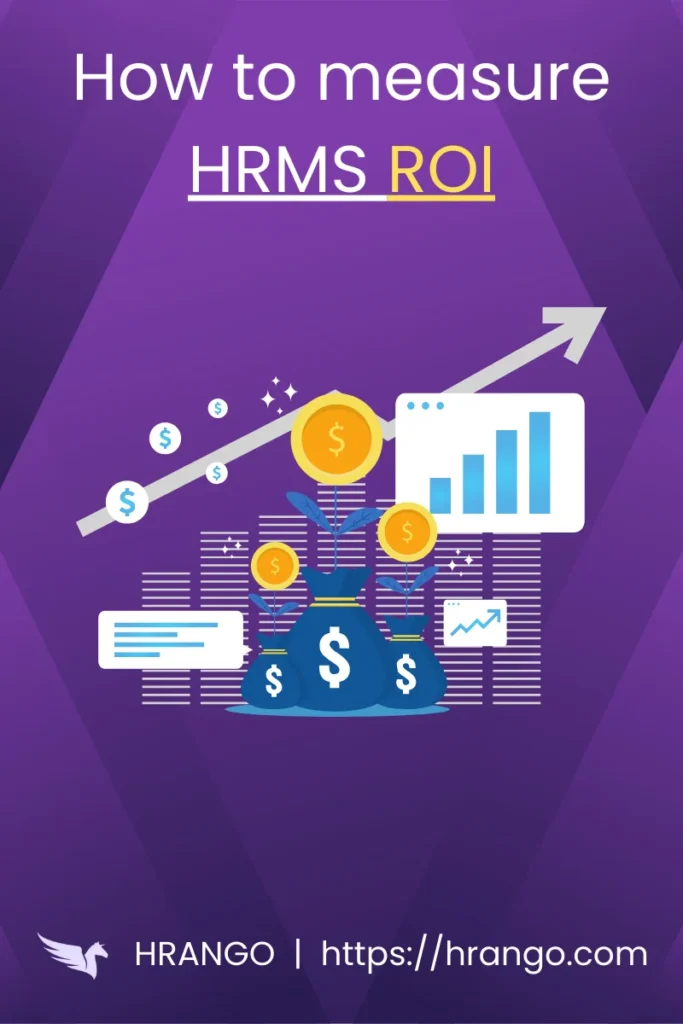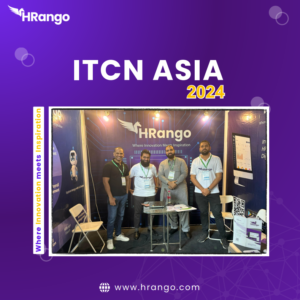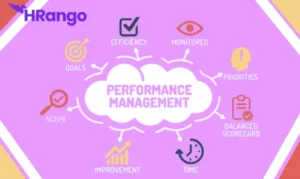Introduction
Human Resource Management Systems (HRMS) have become indispensable tools in modern businesses, streamlining HR processes and boosting overall organizational efficiency. However, with the investment in such technology comes the need to measure its return on investment (ROI). Understanding the ROI of your HRMS is critical in determining its value to your organization and ensuring that the system delivers on its promises of efficiency, cost savings, and enhanced employee management.
In this article, we’ll dive deep into the concept measuring HRMS ROI, key metrics and analysis you should be tracking, and use hRango, a leading HRMS tool, as a reference to illustrate how these metrics are applied in real-world scenarios.
Understanding HRMS ROI
Definition of HRMS ROI
Return on investment (ROI) in the context of HRMS refers to the financial return gained from the implementation and utilization of an HRMS relative to the cost of that system. This includes direct and indirect benefits such as cost savings, time efficiency, and improved employee productivity, all measured against the total cost of ownership (TCO) of the HRMS.
Why Measuring HRMS ROI is Crucial
Why is it so essential to measure HRMS ROI? Simply put, understanding the ROI helps justify the investment in your HR technology. It allows HR leaders to demonstrate to executives how the HRMS contributes to the company’s bottom line, ensuring continued support for the system and potentially guiding future investments in technology.
The Challenge of Quantifying ROI in HR
Unlike other departments, HR deals with both tangible and intangible assets, making it challenging to measure ROI. Factors like improved employee morale, better organizational culture, and enhanced talent management are difficult to quantify but play a crucial role in the overall value delivered by an HRMS.
Key Metrics for Measuring HRMS ROI
Cost Reduction
Direct Cost Savings: HR Staff Efficiency
One of the most straightforward metrics for measuring HRMS ROI is the reduction in HR staff costs. By automating repetitive tasks such as payroll processing, benefits administration, and record-keeping, an HRMS can significantly decrease the workload on HR personnel, allowing them to focus on more strategic initiatives.
Indirect Cost Savings: Reduced Errors and Compliance Issues
HR errors can be costly, especially when it comes to payroll, tax filings, and compliance with labor laws. An HRMS reduces these risks by ensuring accuracy and consistency in HR processes, leading to fewer costly mistakes and penalties.
Time Efficiency
Automating Administrative Tasks
Time is money, and the time saved through automation is a critical metric for measuring HRMS ROI. An HRMS automates a wide range of administrative tasks, from attendance tracking to benefits enrollment, freeing up valuable time for HR professionals to engage in more impactful work.
Streamlining Employee Onboarding and Offboarding
Efficient onboarding and offboarding processes are essential for maintaining productivity and compliance. An HRMS that streamlines these processes can significantly reduce the time and resources required, improving the overall employee experience.
Employee Productivity
Impact on Employee Engagement
Employee engagement is a strong indicator of productivity. An HRMS that fosters engagement through self-service portals, regular feedback mechanisms, and easy access to personal data can enhance overall productivity. Engaged employees are more likely to be motivated, efficient, and loyal to the company.
Enhancing Employee Self-Service
By empowering employees with self-service options for tasks like updating personal information, checking benefits, or requesting time off, an HRMS reduces the burden on HR staff and improves employee satisfaction. This enhanced autonomy directly contributes to higher productivity.
Talent Management
Improved Recruitment Processes
A robust HRMS should streamline recruitment processes, from posting job openings to tracking applications and onboarding new hires. The efficiency gained in recruiting the right talent more quickly and effectively is a crucial component of HRMS ROI.
Better Talent Retention and Development
HRMS systems that offer tools for performance management, career development, and succession planning help retain top talent. This not only reduces turnover costs but also ensures that employees are continuously developing, contributing more to the organization over time.
Calculating HRMS ROI
Initial Costs
Implementation Costs
Before you can measure ROI, you need to account for the initial costs of your HRMS. This includes the purchase price, setup, customization, and any training required to get your team up and running.
Ongoing Maintenance Costs
Don’t forget ongoing expenses like software updates, customer support, and any additional training as your system evolves. These costs should be factored into your ROI calculations to ensure an accurate picture.
Cost Savings
Reduction in Labor Costs
Calculate how much you’re saving in labor costs due to increased efficiency. For example, if your HR staff can manage the same workload with fewer hours, that’s a direct saving attributable to your HRMS.
Savings from Error Reduction and Compliance
Quantifying the savings from reduced errors and compliance issues involves comparing the costs of previous mistakes and fines to the improved accuracy provided by your HRMS.
Productivity Gains
Quantifying Time Saved
Time saved by automating HR processes can be converted into monetary value by calculating the equivalent cost of manual labor hours saved.
Measuring Improved Employee Performance
If your HRMS contributes to better employee performance, for example, through more effective training or performance management, you can measure the financial impact of these improvements on overall business productivity.
Long-Term Value
Scalability of HRMS
A scalable HRMS that grows with your company can provide long-term value by avoiding the need for costly system replacements as your business expands.
Future-Proofing HR Operations
An HRMS that stays updated with the latest HR trends and technology ensures your HR operations are future-proof, providing ongoing ROI as your business and industry evolve.
Hrango: A Case Study in Measuring HRMS ROI
Overview of hRango’s HRMS Solutions
hRango offers comprehensive HRMS solutions designed to streamline HR processes, improve employee engagement, and enhance overall productivity. With features ranging from payroll automation to advanced analytics, hRango is a prime example of how a well-implemented HRMS can deliver substantial ROI.
Real-World ROI Metrics from hRango Users
hRango users have reported significant ROI in several areas. For instance, companies using hRango have seen a 30% reduction in time spent on payroll processing and a 25% improvement in employee engagement scores. These metrics translate into direct cost savings and enhanced productivity.
Lessons Learned from Hrango’s Approach
hRango’s success in delivering measurable ROI underscores the importance of selecting an HRMS that aligns with your business needs, offers robust analytics, and provides ongoing support for optimization and updates.
Challenges in Measuring HRMS ROI
Intangible Benefits: Culture and Morale
One of the challenges in measuring HRMS ROI is accounting for intangible benefits like improved company culture and employee morale. While these factors are harder to quantify, they play a crucial role in the overall success of HR initiatives.
Adapting ROI Metrics to Different Business Sizes
ROI metrics can vary significantly between small businesses and large enterprises. Smaller companies might see a more immediate impact in cost savings, while larger organizations may need to focus more on scalability and long-term value.
The Importance of Continuous Monitoring and Adjustment
Measuring HRMS ROI isn’t a one-time task. Continuous monitoring and regular adjustments based on data and feedback are essential for maximizing the long-term benefits of your HRMS investment.
Best Practices for Maximizing HRMS ROI
Aligning HRMS with Business Goals
To maximize ROI, your HRMS should be aligned with your overall business goals. This ensures that the system supports the strategic direction of your company and delivers measurable value.
Regularly Updating and Optimizing the System
Regular updates and optimizations ensure that your HRMS remains effective and efficient, adapting to changes in your business environment and technological advancements.
Training and Empowering HR Teams
Investing in training for your HR team ensures they are fully capable of utilizing the HRMS to its fullest potential, driving higher ROI through more efficient and effective HR operations.
Utilizing Data Analytics for Ongoing Improvements
Leveraging the data and analytics capabilities of your HRMS allows you to make informed decisions, continually refine your HR strategies, and maximize the ROI of your HR technology investment.
Conclusion
Measuring the ROI of your HRMS is crucial for understanding the value it brings to your organization. By tracking key metrics like cost savings, time efficiency, and employee productivity, you can ensure that your HRMS delivers tangible benefits that justify its cost. HRango stands out as a powerful tool in this regard, providing comprehensive HRMS solutions that deliver measurable ROI. As businesses continue to evolve, the ability to accurately measure and optimize HRMS ROI will remain a vital aspect of successful HR management.
FAQs
What are the most important metrics to track in HRMS ROI?
The most critical metrics include cost reduction, time efficiency, employee productivity, and talent management effectiveness.
How does hRango compare to other HRMS tools in terms of ROI?
hRango is known for its comprehensive features, user-friendly interface, and strong analytics capabilities, which contribute to its high ROI compared to other HRMS tools.
Can small businesses benefit from measuring HRMS ROI?
Absolutely. Even small businesses can gain valuable insights from measuring HRMS ROI, particularly in terms of cost savings and efficiency improvements.
How often should businesses review their HRMS ROI metrics?
It’s recommended to review HRMS ROI metrics at least quarterly to ensure the system continues to deliver value and to make any necessary adjustments.
What are the common pitfalls to avoid when calculating HRMS ROI?
Common pitfalls include neglecting ongoing costs, failing to account for intangible benefits, and not aligning the HRMS with overall business goals.







